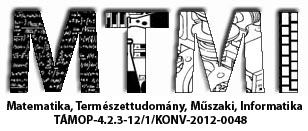Plasma methotrexate levels and toxicities in children with acute lymphoblastic leukemia treated with two different doses of methotrexate.
Abstract data
Background
Acute lymphoblastic leukemia (ALL) is the most common childhood malignancy. Methotrexate, a structural analogue of folic acid, is a key component in all modern ALL treatment protocols. It is mostly given as high-dose (HD) Mtx (>1gr/m2) but a consensus of optimal dose is still to be decided.
The aim of the study was to retrospectively analyze the Mtx levels, leucovorin rescue and toxicity profile in patients given 2gr/m2/24h (mM block) vs. 5gr/m2/24h (M block) of Mtx consolidation therapy according to the BFM-ALL IC 2009 protocol currently used in 14 countries worldwide, including Hungary.
Method
13 patients (mean age 6.9 yrs) were diagnosed with ALL at the Dep. of Pediatric Hematology-Oncology of the University of Debrecen, MHSC, between June, 2011 and October, 2012. Of these, 12 achieved complete remission and were randomized to receive either 2gr/m2/24h or 5gr/m2/24h Mtx consolidation therapy. Mtx infusions were given every 14th day, at 4 different occasions. Plasma Mtx measurements were made at 24h, 42h, 48h or until levels were ≤0,25 μmol/L. Acute toxicities, Mtx levels and leucovorin length and cumulative dose were gathered from patient charts and summarized.
Results
One patient was excluded because of age (<1 yr) and one died during induction therapy. Of the remaining 11 patients, 9 were diagnosed with B-ALL and 2 with T-ALL. Both mM and M blocks were well tolerated and there were no fatalities. One patient was switched from M to mM blocks due to extremely high plasma Mtx levels associated with severe acute toxicity. Plasma Mtx levels were higher in patients receiving 5gr/m2/24h. This explains why higher cumulative doses and longer rescue schedules of leucovorin were employed and correlates with the higher frequency of drug-induced toxicities observed.
Conclusion
HD Mtx treatment is a feasible component of anti-ALL therapy regardless of the dose applied. As expected, the higher doses were associated with a more intensive exposure of the drug, thus requiring a longer rescue period. It remains to be seen if the greater expressed toxicities and treatment cost associated with the M vs. mM blocks would result in lower rates of relapse in children with ALL.
Támogatók: Támogatók: Az NTP-TDK-14-0007 számú, A Debreceni Egyetem ÁOK TDK tevékenység népszerűsítése helyi konferencia keretében, az NTP-TDK-14-0006 számú, A Debreceni Egyetem Népegészségügyi Karán folyó Tudományos Diákköri kutatások támogatása, NTP-HHTDK-15-0011-es A Debreceni Egyetem ÁOK TDK tevékenység népszerűsítése 2016. évi helyi konferencia keretében, valamint a NTP-HHTDK-15-0057-es számú, A Debreceni Egyetem Népegészségügyi Karán folyó Tudományos Diákköri kutatások támogatása című pályázatokhoz kapcsolódóan az Emberi Erőforrás Támogatáskezelő, az Emberi Erőforrások Minisztériuma, az Oktatáskutató és Fejlesztő Intézet és a Nemzeti Tehetség Program



